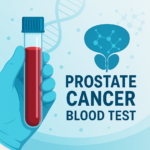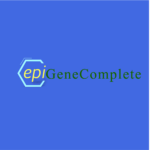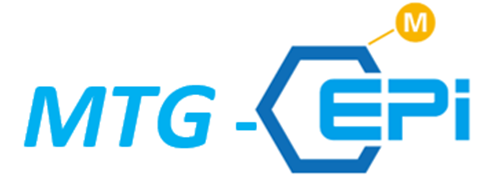Are Microarrays Still Reliable? How Next-Generation Sequencing Outperforms Traditional Methods
Microarray Technology
Microarrays are commonly used to study DNA methylation. These small chips contain many probes that attach to specific parts of the DNA after it has been treated to reveal which areas are methylated. Methylation affects gene activity, and the probes can detect whether a DNA site is methylated or not by comparing signals from two different types of probes: one for methylated and one for unmethylated sites. The results show how much methylation is present at each site in the genome.
The use of microarrays, such as the Illumina MethylationEPIC v1.0 BeadChip, has become popular in epigenetic research due to its relatively low cost and high throughput. This technology allows for the analysis of several hundred thousand CpG sites simultaneously and provides the ability to analyze a large number of samples in a single series.
There is growing concern about the accuracy of array technology (Hecker, Weiss, Lasky-Su, DeMeo, & Lange, 2024; Zhang et al., 2024). Both groups of scientists discussed the problem of the reliability of results obtained using microarrays. They critically assessed the reliability of the probes on the Illumina MethylationEPIC v1.0 arrays and identified several serious shortcomings. The primary method of evaluation is the intraclass correlation coefficient (ICC), which shows how consistently a probe measures the same sample in repeated tests.
Array Technology Issues
One of the main problems is the so-called “batch effect.” Batch effects occur due to technical differences between different batches of arrays or even between slides of the same batch. These differences can arise from minor variations in the manufacturing process, chemical reagents, or experimental conditions.
The study demonstrated that a large number of probes have low reliability and are highly dependent on the slide on which the analysis was performed. For example, if the same DNA sample is measured on different slides or even in different parts of the same slide, the results can differ significantly. This makes microarray data analysis unreliable, especially in cases where changes in methylation need to be observed over time (e.g., to assess the effectiveness of interventions).
The authors of the letter suggest making more precise adjustments for such effects. However, even after adjustments, a significant number of probes still show low reliability. They note that, for many studies, such unreliability can lead to false-positive or false-negative results.
Comparison of Array and Next-Generation Sequencing (NGS)
| Parameter | Array | Next-Generation Sequencing (NGS) |
|---|---|---|
| Measured Regions | Only predefined CpG sites | Any genomic regions |
| Sensitivity to Batch Effects | High (batch, slide, and positional effects) | Minimal (controlled at the analysis level) |
| Measurement Accuracy | Can vary depending on experimental conditions | Higher accuracy and reproducibility |
| Reproducibility of Results | Results can differ across arrays or slides | High reproducibility regardless of conditions |
| Ability to Analyze Individual Changes | Limited by technical factors and artifacts | Reliable monitoring of individual changes |
| Artifact Correction | Requires complex statistical methods and may not always be effective | Easier to control and correct |
| Application for Biological Clocks | Problematic due to variability in results | High accuracy and suitable for interventions and longitudinal studies |
Conclusion
The reliability issues with Array data make this technology less suitable for accurate measurements of biological age, especially when it comes to long-term monitoring and assessing changes after interventions. Even after adjusting for batch effects, the results may remain imprecise, reducing their reliability.
In contrast, Next-Generation Sequencing (NGS) technologies provide much more stable and reproducible data, making them ideal for use in biological clocks. They can accurately measure methylation levels anywhere in the genome, avoiding the artifacts inherent in microarrays.
Our company, EpiMedTech Global, offers epiAge, the only biological clock on the market based on Next-Generation Sequencing technology. We are the only company that provides technical accuracy and transparency by measuring methylation three times and, therefore, assessing technical error—something not offered by any other company. This approach provides unrivaled precision and makes epiAge the ideal choice for assessing changes in biological age in the context of various interventions and long-term health monitoring.
References
- Hecker, J., Weiss, S. T., Lasky-Su, J. A., DeMeo, D. L., & Lange, C. (2024). Letter to the editor: critical evaluation of the reliability of DNA methylation probes on the Illumina MethylationEPIC v1.0 BeadChip microarrays. Epigenetics, 19(1), 2411470. doi:10.1080/15592294.2024.2411470
- Zhang, W., Young, J. I., Gomez, L., Schmidt, M. A., Lukacsovich, D., Varma, A., . . . Wang, L. (2024). Critical evaluation of the reliability of DNA methylation probes on the Illumina MethylationEPIC v1.0 BeadChip microarrays. Epigenetics, 19(1), 2333660. doi:10.1080/15592294.2024.2333660
Recent Blog Posts
-
 13 Jun 2025MTL Epitherapeutics and RI-MUHC Develop Early Prostate Cancer Blood Test
13 Jun 2025MTL Epitherapeutics and RI-MUHC Develop Early Prostate Cancer Blood Test -
 11 Jan 2025EpiAge Research Publication Signals a New Era in Understanding Biological Aging
11 Jan 2025EpiAge Research Publication Signals a New Era in Understanding Biological Aging -
 18 Nov 2024EpiMedtech Global Announces FDA Registration of EPIAGE, the First Epigenetic Age Test Registered by the FDA
18 Nov 2024EpiMedtech Global Announces FDA Registration of EPIAGE, the First Epigenetic Age Test Registered by the FDA -
 18 Nov 2024EpiMedTech Global Validates Unique epiCervix HPV Combo Test for Cervical Cancer Detection
18 Nov 2024EpiMedTech Global Validates Unique epiCervix HPV Combo Test for Cervical Cancer Detection -
 31 Oct 2024HKG epiTherapeutics’ MetaGen Genetic Risk Assessment Test Receives FDA Registration, Now Available in the U.S.
31 Oct 2024HKG epiTherapeutics’ MetaGen Genetic Risk Assessment Test Receives FDA Registration, Now Available in the U.S. -
 31 Oct 2024EpiMedTech Global Launches epiGeneComplete: A Breakthrough Genetic and Epigenetic Test for Comprehensive Health Diagnostics
31 Oct 2024EpiMedTech Global Launches epiGeneComplete: A Breakthrough Genetic and Epigenetic Test for Comprehensive Health Diagnostics -
 30 Oct 2024Enhanced Early Detection of Liver Cancer
30 Oct 2024Enhanced Early Detection of Liver Cancer -
 08 Oct 2024Are Microarrays Still Reliable? How Next-Generation Sequencing Outperforms Traditional Methods
08 Oct 2024Are Microarrays Still Reliable? How Next-Generation Sequencing Outperforms Traditional Methods



